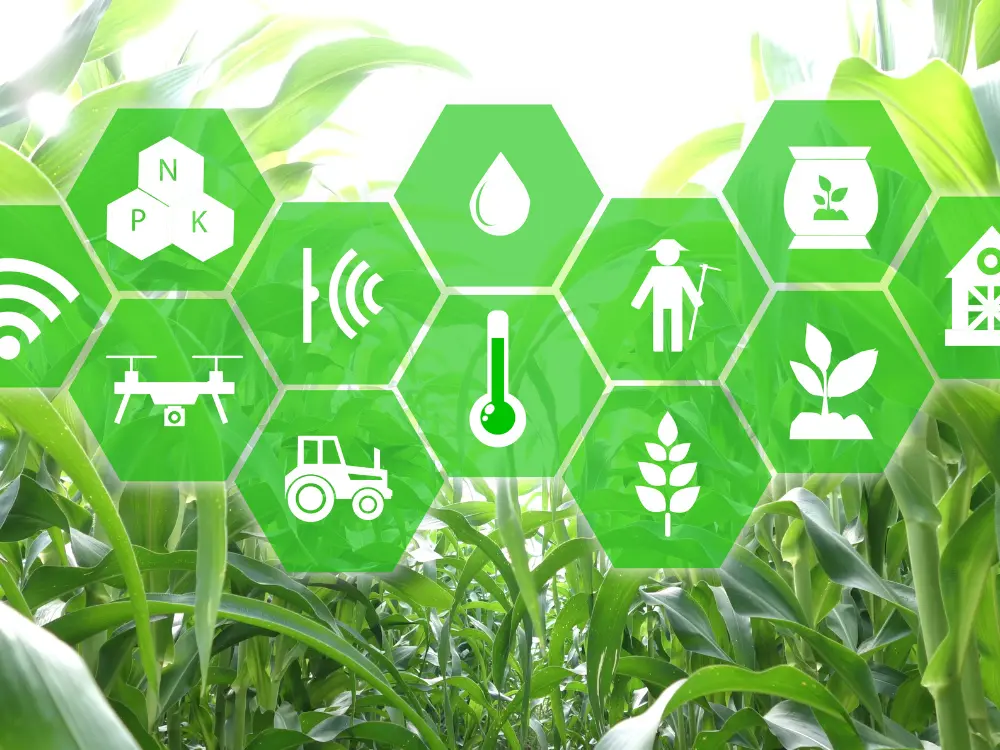In India, agriculture is more than just a profession; it’s a way of life for millions of farmers who depend on their crops for their livelihoods. However, one of the biggest challenges that farmers face is the constant threat of crop diseases. These diseases can spread rapidly, devastating entire fields and leading to significant financial losses. Traditional methods of detecting and managing crop diseases often rely on visual inspections, which can be time-consuming and sometimes too late to prevent the damage. This is where Artificial Intelligence (AI) is making a transformative impact, providing farmers with advanced tools to predict and manage crop diseases before they become unmanageable.
Understanding Crop Diseases
Crop diseases are caused by various pathogens, including fungi, bacteria, viruses, and nematodes. These pathogens can infect plants at any stage of their growth, leading to reduced yields and even total crop failure. In India, where many farmers cultivate on small plots of land, even a minor outbreak can have devastating effects on their livelihoods.
The traditional approach to managing crop diseases involves regular monitoring and the application of chemical treatments. However, this method has several drawbacks. First, it requires a deep understanding of the symptoms and progression of different diseases, which not all farmers possess. Second, chemical treatments are often applied as a reactive measure, after the disease has already taken hold, which may not always be effective. Finally, the overuse of chemical treatments can lead to resistance in pathogens, making them harder to control over time.
How AI is Changing the Game
Artificial Intelligence offers a proactive approach to managing crop diseases by predicting their occurrence before they spread. AI systems use a combination of data sources—including weather patterns, soil conditions, historical data, and real-time images from fields—to identify the risk factors for various diseases. By analyzing this data, AI can provide farmers with early warnings, allowing them to take preventive measures.
1. Early Detection and Prevention
AI-powered tools can detect early signs of disease by analyzing images of crops taken by drones or smartphones. These tools use machine learning algorithms to recognize patterns and symptoms that are invisible to the naked eye. For instance, a slight discoloration of leaves or an unusual pattern in the growth of a plant may indicate the early stages of a fungal infection. Once detected, AI can recommend specific treatments or adjustments to farming practices to prevent the disease from spreading.
2. Weather-Based Predictions
Weather conditions play a crucial role in the spread of many crop diseases. AI systems can analyze weather forecasts and historical data to predict the likelihood of disease outbreaks. For example, high humidity and warm temperatures are ideal conditions for the spread of fungal diseases like rust or blight. AI can alert farmers when these conditions are likely to occur, allowing them to apply protective treatments in advance.
3. Customized Disease Management Plans
One of the significant advantages of AI is its ability to provide customized recommendations based on the specific conditions of each farm. By analyzing data from individual fields, AI can suggest the most effective treatment options, taking into account factors like soil type, crop variety, and local climate conditions. This targeted approach not only improves the effectiveness of disease management but also reduces the need for blanket chemical treatments, promoting more sustainable farming practices.
4. Reducing Costs and Increasing Yields
By predicting crop diseases and enabling early intervention, AI helps farmers reduce the costs associated with disease management. Instead of spending large amounts of money on chemical treatments that may or may not be effective, farmers can apply treatments more strategically, saving both time and resources. Additionally, by preventing disease outbreaks, AI helps to protect crop yields, ensuring that farmers can maximize their production and income.
Success Stories in India
Several initiatives in India are already showcasing the potential of AI in predicting and managing crop diseases. For example, AI-based apps are being used in states like Karnataka and Maharashtra to help farmers identify diseases in crops like cotton and sugarcane. These apps allow farmers to take pictures of affected plants, which are then analyzed by AI to provide instant diagnoses and treatment recommendations. This has led to significant improvements in disease management and crop yields, demonstrating the practical benefits of AI in agriculture.
Challenges and the Way Forward
Despite its potential, the adoption of AI in agriculture is not without challenges. Many farmers in India still lack access to the necessary technology and digital infrastructure to take full advantage of AI tools. Additionally, there is a need for more localized data to improve the accuracy of AI predictions, as disease patterns can vary significantly across different regions.
To address these challenges, government and private sector initiatives are crucial in promoting digital literacy and providing affordable technology solutions to farmers. Moreover, ongoing research and collaboration between agricultural scientists and AI experts will be essential in developing more refined and accurate AI tools tailored to the specific needs of Indian farmers.
Conclusion
AI is proving to be a powerful ally in the fight against crop diseases, offering farmers new ways to protect their crops and livelihoods. By enabling early detection, weather-based predictions, and customized disease management plans, AI is helping to transform Indian agriculture, making it more resilient and sustainable. As technology continues to evolve and become more accessible, AI has the potential to revolutionize the way farmers manage their crops, ensuring a more prosperous future for Indian agriculture.

